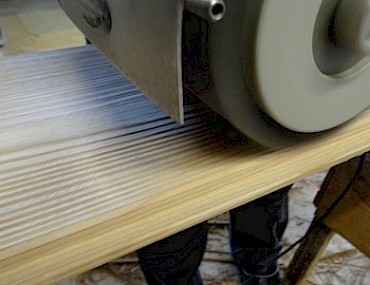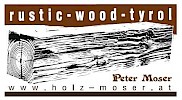
Chopping
In previous times, surfaces were chopped by hand with a broad hatchet—work that took a very long time. In 1980, Peter Moser began to experiment and developed the world’s first chopping machine for surface processing. Nowadays, the machines are fully automatic. Our current machines can process three-layer boards as large as 6 metres by 2.1 metres and beams or glue-laminated timber as large as 20 metres by 1.2 metres without fail.
The technical details of surface processing remain our company secret. The machines we helped to develop process the wood in a way that makes each pattern unique. There is no repeating pattern and each piece is an individual item—just like surfaces chopped by hand.

Grinding
Wood is made up of hard and soft rings that arise due to the tree’s natural growth. We take advantage of this natural feature when grinding, showing off the wood’s texture to its best advantage.
The growth rings of a tree develop due to the alternating growth of early and late wood. The softer early wood is brought to the surface through the grinding process, the harder late wood does not break away, but remains largely intact. Therefore, professional grinding can increase the natural texture of wood.

Burning
Flame treatment of wood changes its surface, but the material stays intact. This technique is suitable for all types of wood that are to keep their historical character and get darker in colour.
The singed planks go through an intense fire cycle. Afterwards, they are washed properly in preparation of surface processing. This treatment cycle results in hard wooden parts remaining, while soft parts are removed.
We distinguish between chopped burned washed—resulting in a very rustic surface—and burned washed, with the same colour as a result but a more elegant structure.

 PDF Download
PDF Download